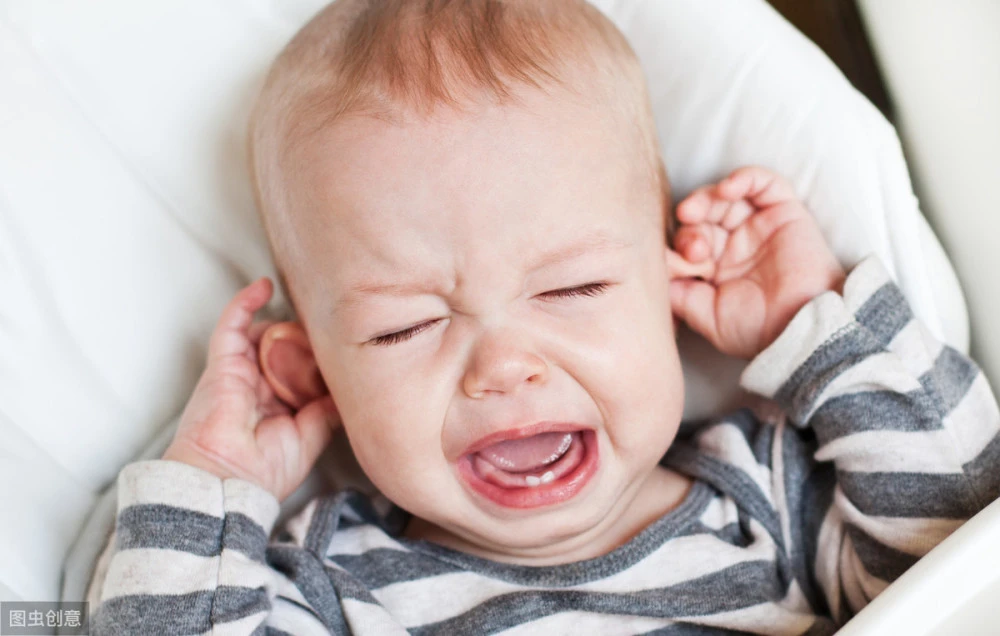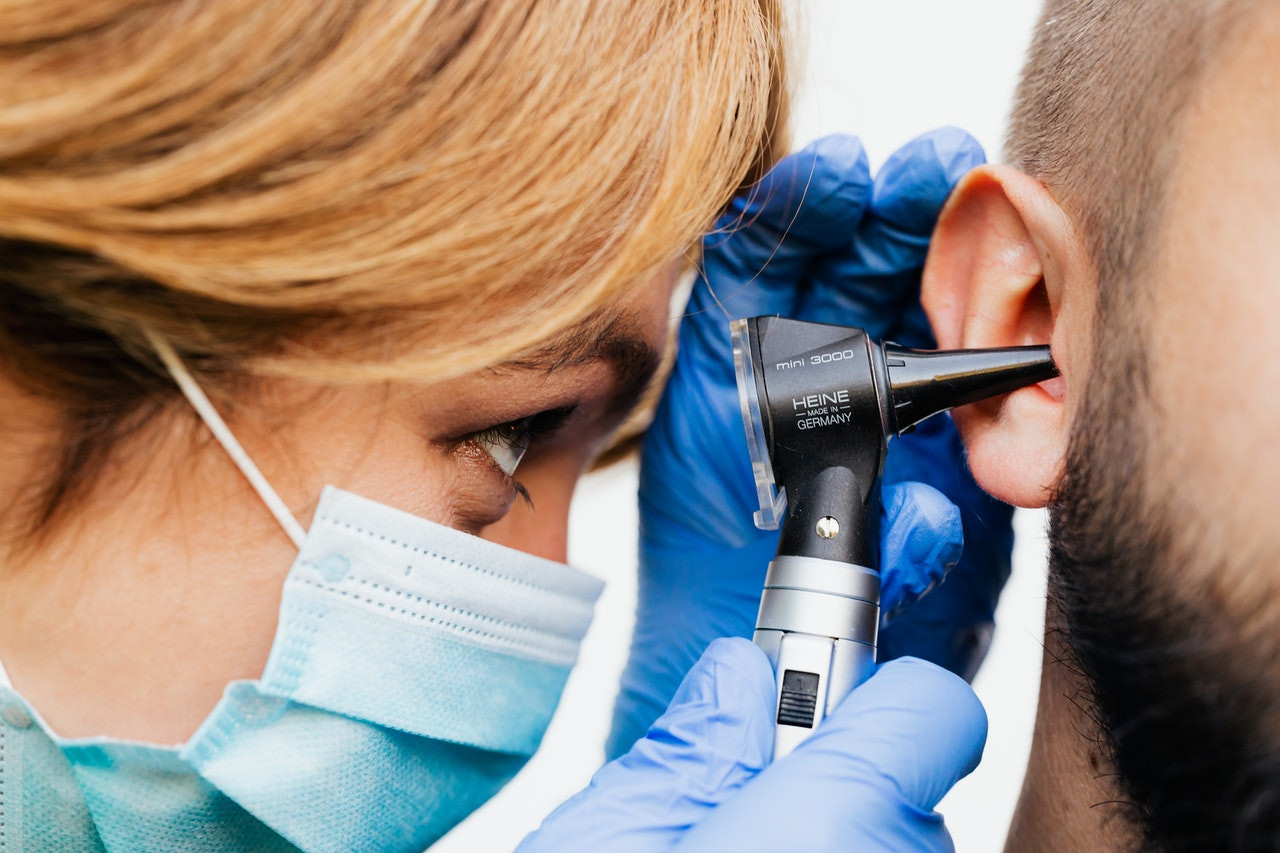Definisi
Otitis media akut (OMA) adalah peradangan atau infeksi pada area di belakang gendang telinga atau area telinga tengah yang gejalanya baru muncul beberapa hari dan belum berlangsung dalam jangka panjang. OMA lebih sering ditemukan pada anak-anak walaupun bisa terjadi pada orang dewasa.
Penyebab
1. Infeksi
OMA disebabkan oleh infeksi bakteri atau virus. Infeksi ini seringkali didahului oleh infeksi saluran nafas atas lainnya seperti pilek, flu, atau alergi. Infeksi tersebut menimbulkan penyumbatan atau pembengkakan pada saluran hidung dan tenggorokan, dan tuba eustachius.
Tuba eustachius adalah saluran sempit yang menghubungkan telinga tengah dengan bagian belakang tenggorokan. Bagian ujung tuba eustachius yang berakhir di tenggorokan dapat membuka dan menutup dan berperan untuk:
- Mengatur tekanan udara di telinga tengah
- Membersihkan udara di telinga
- Sebagai tempat keluar cairan dari telinga tengah
2. Pembengkakan tuba eustachius
OMA terjadi ketika tuba eustachius membengkak atau tersumbat oleh sebab lain, sehingga akan terjadi penurunan pertukaran udara, peningkatan tekanan negatif di telinga tengah, dan penumpukan cairan di telinga tengah. Cairan yang terperangkap tersebut dapat menjadi tempat pertumbuhan kuman dan menimbulkan gejala infeksi telinga.
Pada anak kecil, tuba eustachius lebih pendek dan lebih mendatar dibandingkan anak yang lebih besar dan orang dewasa. Oleh karena itu, cairan telinga tengah anak kecil lebih sulit keluar dan lebih mudah tersumbat. Hal ini membuat anak kecil lebih rentan mengalami OMA.
3. Pembengkakan kelenjar adenoid
Tuba eustachius juga dapat tersumbat jika ada pembengkakan pada kelenjar adenoid. Adenoid adalah kelenjar yang terletak di belakang atas hidung, merupakan bagian dari sistem kekebalan tubuh. Karena adenoid terletak di dekat ujung tuba eustachius, pembengkakan adenoid dapat menyumbat tuba eustachius yang akan menyebabkan OMA.
Pembengkakan dan iritasi adenoid lebih sering menjadi penyebab OMA pada anak karena kelenjar adenoid anak lebih besar dibandingkan adenoid orang dewasa. Selain beberapa hal di atas, tuba eustachius juga dapat membengkak atau tersumbat karena infeksi rongga sinus, asap rokok, dan minum sambil berbaring yang sering terjadi pada bayi.
Faktor Risiko
Faktor risiko OMA meliputi:
- Usia 6 bulan hingga 3 tahun lebih rentan mengalami OMA karena ukuran dan bentuk tuba eustachius serta sistem imunnya belum berkembang dengan optimal
- Anak yang dititipkan di penitipan anak lebih mudah terkena pilek dan infeksi telinga dibandingkan anak yang tidak berada di penitipan anak
- Pemberian susu pada bayi dengan dot, terutama dengan posisi berbaring, cenderung mudah terkena OMA dibanding bayi yang menyusui langsung dari payudara ibu
- Faktor musim, OMA lebih sering terjadi pada musim gugur dan dingin. Orang dengan alergi terkait musim lebih berisiko terkena OMA saat banyak terdapat serbuk sari tanaman pada musim-musim tertentu
- Kualitas udara yang buruk, paparan asap rokok atau polusi udara dapat meningkatkan risiko OMA
- Mengalami perubahan ketinggian
- Mengalami perubahan iklim
- Baru saja mengalami pilek, flu, infeksi sinus, atau infeksi telinga
- Memiliki sumbing pada langit-langit mulut. Perbedaan struktur dan otot rahang pada anak dengan sumbing langit-langit mulut membuat tuba eustachius lebih sulit untuk mengeluarkan cairan dari telinga tengah seperti sebagaimana mestinya
- Faktor genetik atau keturunan disebutkan juga memiliki peranan dalam meningkatkan risiko OMA pada anak
Gejala
Bayi dan anak-anak dapat menunjukan satu atau lebih gejala berikut:
- Rewel dan sering menangis pada bayi
- Mencengkeram telinga sambil meringis kesakitan pada balita
- Mengeluh nyeri telinga pada anak yang lebih besar, terutama saat berbaring
- Sulit tidur
- Menarik telinga
- Sakit kepala
- Perasaan penuh pada telinga
- Keluar cairan dari telinga
- Demam dengan suhu 38⁰C atau lebih
- Nafsu makan menurun
- Muntah
- Diare
- Kurang keseimbangan
- Gangguan pendengaran
Sementara, jika orang dewasa mengalami OMA, dapat menunjukan gejala:
- Nyeri telinga
- Keluar cairan dari telinga
- Gangguan pendengaran
Diagnosis
Dokter anak dapat menggunakan satu atau lebih pemeriksaan telinga berikut untuk mendiagnosis OMA:
Otoskop
Dokter anak menggunakan alat yang disebut otoskop, alat yang memiliki kaca pembesar dan lampu untuk melihat ke dalam telinga anak dan menilai bila terdapat:
- Kemerahan
- Bengkak
- Pendarahan
- Nanah
- Gelembung udara
- Cairan di telinga tengah
- Perforasi atau lubang pada gendang telinga
Timpanometri
Pada tes timpanometri, dokter anak menggunakan alat kecil untuk mengukur tekanan udara di telinga anak. Selain itu, timpanometri dapat memberikan informasi yang berguna terkait adanya cairan di telinga tehang, bagaimana gerakan gendang telinga, dan volume kanal telinga.
Reflektometri
Pada tes reflektometri, dokter anak menggunakan alat kecil yang mengeluarkan suara di dekat telinga anak. Dokter dapat menentukan apakah ada cairan di telinga dengan mendengarkan suara yang dipantulkan kembali dari telinga.
Tes pendengaran
Dokter dapat melakukan tes pendengaran untuk menentukan apakah anak mengalami gangguan pendengaran atau penurunan kemampuan pendengaran.
Tata laksana
Sebagian besar infeksi OMA dapat sembuh tanpa pengobatan antibiotik. Perawatan di rumah dan obat pereda nyeri biasanya direkomendasikan sebelum pemberian antibiotik untuk menghindari penggunaan antibiotik yang berlebihan dan mengurangi risiko efek samping antibiotik.
Perawatan di rumah
Dokter dapat menyarankan perawatan berikut yang dapat dilakukan di rumah untuk meredakan nyeri pada anak sambil menunggu infeksi OMA mereda:
- Mengompres area sekitar telinga yang sakit dengan lap air hangat
- Menggunakan obat minum yang dijual bebas seperti ibuprofen dan parasetamol untuk menghilangkan rasa sakit
Obat-obatan
Jika gejala belum membaik, dokter akan meresepkan obat tetes telinga penghilang rasa sakit dan pereda nyeri lainnya. Dokter juga dapat meresepkan antibiotik jika gejala belum menghilang setelah beberapa hari perawatan di rumah.
Prosedur pembedahan
Dokter dapat merekomendasikan operasi jika terdapat indikasi dilakukannya pembedahan, dan keputusan ini ditentukan dari beragam faktor, seperti dari kondisi pasien, bila infeksi tidak respon dengan pengobatan, atau jika anak mengalami infeksi telinga berulang.
Pilihan pembedahan untuk OMA meliputi:
- Timpanosentesis, liang telinga akan disterilisasi dengan larutan povidon iodin lalu memasukkan jarum ke bagian depan gendang telinga, lalu mengalirkan cairan dari telinga tengah, sehingga menormalkan kembali tekanan udara
- Miringotomi, melakukan insisi atau sayatan kecil pada gendang telinga untuk mengeluarkan cairan yang menumpuk dari telinga bagian tengah untuk mengalir keluar ke liang telinga
Komplikasi
OMA umumnya bisa sembuh tanpa komplikasi. Namun, infeksi dapat kambuh lagi jika terpapar oleh faktor risiko atau penyebab yang mendasari. Anak dapat mengalami gangguan pendengaran sementara saat sedang sakit. Namun, pendengaran seharusnya sudah normal kembali setelah pengobatan.
Terkadang, OMA dapat menimbulkan komplikasi seperti:
- Infeksi telinga berulang
- Pembengkakan kelenjar adenoid
- Pembengkakan amandel
- Gendang telinga pecah
- Kolesteatoma, yaitu kulit lapisan telinga yang terkelupas dan terperangkap bersama kotoran telinga membentuk kista
- Keterlambatan bicara pada anak-anak yang mengalami infeksi otitis media berulang karena adanya gangguan pendengaran
- Pada kasus yang jarang terjadi, dapat timbul infeksi pada tulang mastoid (mastoiditis), yaitu tulang yang terletak di belakang telinga, atau juga infeksi pada selaput otak (meningitis)
Pencegahan
Anda dapat mengurangi risiko anak terkena OMA dengan melakukan hal berikut:
- Seringlah mencuci tangan dan mainan anak untuk menghindari kuman yang dapat menyebabkan pilek atau infeksi pernapasan lainnya
- Hindari asap rokok
- Vaksinasi influenza dan pneumokokus untuk mencegah penyakit influenza dan radang paru
- Menyusui bayi secara langsung dibandingkan memberi susu botol jika memungkinkan
- Hindari memberikan dot pada bayi
Kapan harus ke dokter?
Tanda dan gejala OMA di atas dapat juga menyerupai beberapa penyakit telinga lainnya. Sehingga, sangat penting untuk mendapatkan diagnosis yang akurat dan pengobatan yang cepat.
Konsultasikan keluhan dengan dokter jika:
- Gejala berlangsung lebih dari satu hari
- Gejala muncul pada anak di bawah usia 6 bulan
- Nyeri telinga berat
- Bayi atau balita sulit tidur atau rewel setelah pilek atau infeksi saluran pernapasan atas lainnya
- Keluar cairan, nanah, atau darah dari telinga
Mau tahu lebih lanjut seputar penyakit-penyakit lainnya? Cek di sini, ya!
- dr Hanifa Rahma
Kivi, R. (2019). Acute otitis media: causes, symptoms, and diagnosis. Retrieved 10 March 2022, from https://www.healthline.com/health/ear-infection-acute
Ear infection (middle ear). (2021). Retrieved 10 March 2022, from https://www.mayoclinic.org/diseases-conditions/ear-infections/symptoms-causes/syc-20351616
Donaldson, JD. (2021). Acute otitis media. Retrieved 10 March 2022, from https://emedicine.medscape.com/article/859316-overview
Danishyar, A., Ashurst, JV. (2021). Acute Otitis Media. StatPearls Publishing. Retrieved 10 March 2022, from https://www.ncbi.nlm.nih.gov/books/NBK470332










